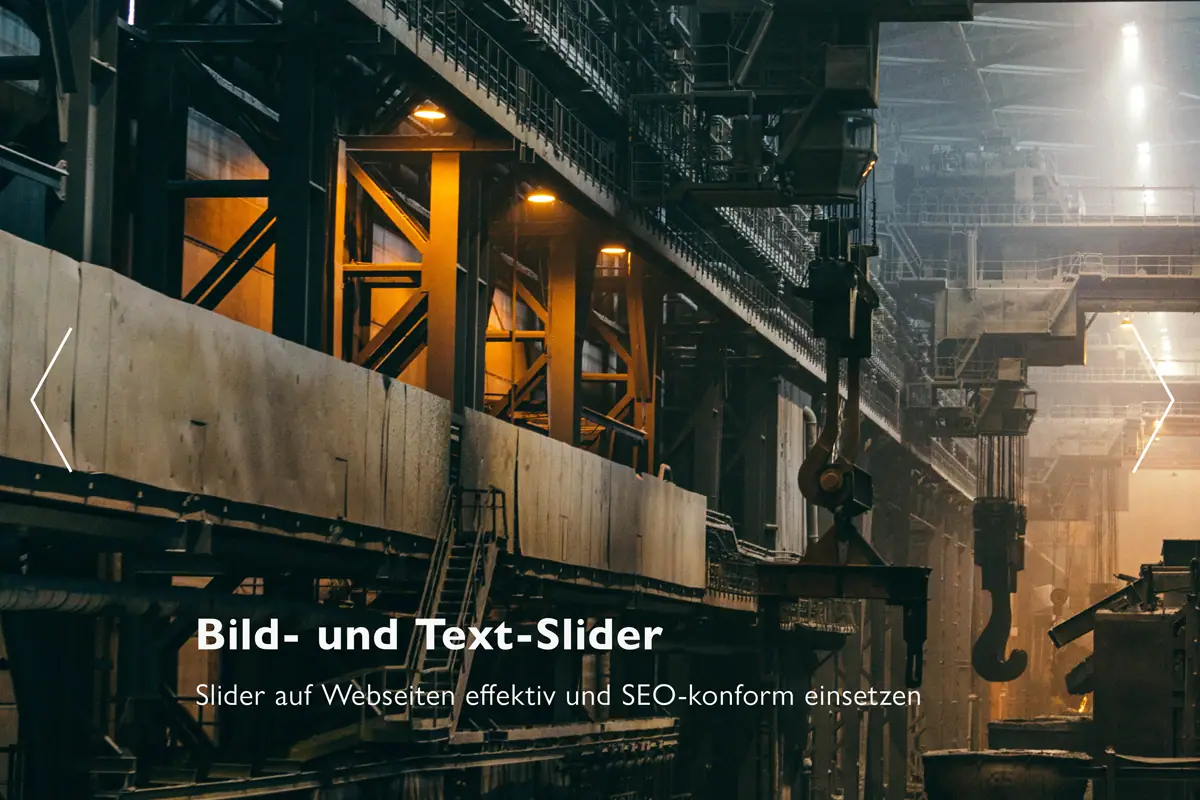Use sliders effectively
Sliders present several topics in one position
If you have several topics that should all be presented in one position on websites, a slider is the ideal solution. The individual topics can be presented clearly and attractively on the individual slides of the slider.
Various sliders are inserted on this page.
Which version you choose depends on the content to be displayed. I will make suggestions in the project and explain the options in detail.
Text slider in front of static background image
If an image applies to all statements, it is sufficient to simply let the text slide so that a new image does not have to be loaded with every slide.
Photo | Christopher Burns on Unsplash
Use image-text slider
If you also need a separate image for each statement, this is of course also easily possible with an image-text slider. The same applies to the slider images: first scale and compress them and then upload them to WordPress.
See also: WordPress: Edit images before uploading
What should be considered when using sliders with regard to SEO?
When adding an HTML slider to a website, there are a few things you need to consider to ensure it is optimised for search engines (SEO). Here are some tips for effective and SEO-compliant use:
Remember that SEO is an ongoing process, and it's important to keep up to date with industry best practices and search engine algorithms to maintain and improve your website's search results.
Cf. Search engine optimised creation of website content
Crawlability
Make sure that search engine bots can crawl and index the content of your slider. Sometimes sliders implemented with JavaScript are not easily crawlable; search engines may only be able to analyse the first slide, as the other content is only loaded later and is therefore invisible to the "quick glance" of search engine crawlers. If possible, use HTML and CSS for the slider to ensure better accessibility for search engines.
Text content
Make sure that the slider is accompanied by relevant text content. Search engines rely on text to understand the content of a page. If your slider contains only images, captions or textless content, it can be difficult for search engines to understand the context. Include relevant keywords in the text content associated with the slider. This helps search engines recognise the relevance of your content to users' search queries.
Alt text for images
If your slider contains images, use descriptive and relevant alt text for each image. Alt text not only helps search engines understand the content, but also improves accessibility for users with disabilities.
Semantic HTML
Use semantic HTML tags to structure your content. This helps search engines to understand the hierarchy and meaning of the various elements on the page.
Responsive design
Make sure your slider is responsive and works well on different devices and screen sizes. Google considers mobile-friendliness as a ranking factor, so a responsive design is crucial for search engine optimisation.
Page loading speed
Optimise the images and content within the slider to minimise page load times. Search engines, especially Google, consider page load speed as a ranking factor. You can use tools such as Google PageSpeed Insights to check and improve the loading speed of your website.
